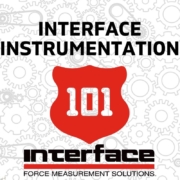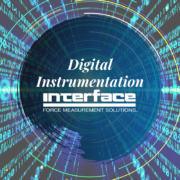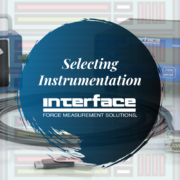Instrumentation Analog Versus Digital Outputs
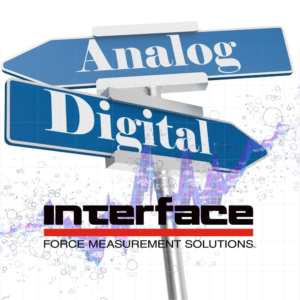 Interface sells a wide variety of instruments designed to help take data measured on a load cell or torque transducer and convert it into a readable form. Within this expanding family of instrumentation offered by Interface, there are two types of output methods available: analog or digital.
Interface sells a wide variety of instruments designed to help take data measured on a load cell or torque transducer and convert it into a readable form. Within this expanding family of instrumentation offered by Interface, there are two types of output methods available: analog or digital.
By far, analog output for test and measurement instrumentation has been the most popular. Analog output is measurement represented in a continuous stream. Technologies have advanced a growing demand for more advanced data capture. Digital instrumentation uses digits as the output, providing greater measurement accuracy and digital resolution.
Understanding which output is best for your project is important in getting the right communication capabilities to use with the designated sensor components. It’s an important consideration whether you are designing a new testing system or working with an existing program and looking to add new instrumentation. You can gain further insights by watching our Instructional on Instrumentation webinar here.
Here is a brief explanation on the difference between analog and digital instrumentation, along with advantages of each.
Benefits of Digital
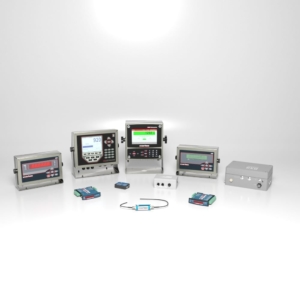 Digital outputs are becoming more and more popular for several reasons. The first is that they often incur lower installation costs than their analog counterpart. Digital also works across existing networks. For instance, if you have ethernet IP you can interface directly into it as opposed to running analog signals.
Digital outputs are becoming more and more popular for several reasons. The first is that they often incur lower installation costs than their analog counterpart. Digital also works across existing networks. For instance, if you have ethernet IP you can interface directly into it as opposed to running analog signals.
Digital outputs are also far more scalable than analog because a lot of the time you can replace sensors without causing a disruption. Multiple sensors can also be daisy chained into a single cable run, meaning the user can piggyback into an existing network rather than running cables back to a controller. This is one reasons the installation cost is often lower.
There are also built-in error detections with digital outputs to detect things like open legs and bridges. And if you’re digitizing at the sensor, the system is less susceptible to noise because digital signals are natural noise immune.
Benefits of Analog
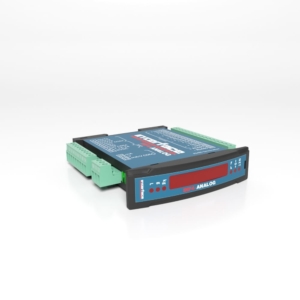 With all the benefits of digital, why would someone still choose the older output method of analog? Analog signals are still faster than digital and are much easier to work with. Additionally, analog systems take up far less bandwidth than digital. Therefore, if you’re in an area with low-bandwidth, digital output solutions may slow the network down, while analog will not.
With all the benefits of digital, why would someone still choose the older output method of analog? Analog signals are still faster than digital and are much easier to work with. Additionally, analog systems take up far less bandwidth than digital. Therefore, if you’re in an area with low-bandwidth, digital output solutions may slow the network down, while analog will not.
It is important to note that many DAQs and PLCs accept analog signals, so if the user wants to stay with what they already have in house, analog may be the better option.
Choosing Analog or Digital
When deciding between analog and digital instrumentation output capabilities, it’s important to consider the following questions as well:
- Are you connecting to an existing network? For instance, if its CAN bus, you may want to use CAN bus sensors. But, if it’s pure analog, you’re not going to want to convert everything over to digital unless there are other factors driving this move?
- Are you connecting to an existing DAQ device? If your system has available analog input channels, you may be fine with analog output. If it doesn’t, you may have to add extra channels. Or say the system has an EtherCAT connection, you can use the same DAQ without adding channels by interfacing with it digitally.
- What is your budget? If your network already has a lot of analog systems, the cost of staying with analog may be worth it. If you must add channels to your DAQ, but you have digital interfaces available, that may allow for cost savings based on how many channels and sensors you need.
- How many sensors are you connecting? If you have a lot of sensors, the obvious answer is digital because of the flexibility it provides, and the limited cable runs needed. But if you don’t need many sensors, analog could make more sense.
There are several considerations to make when choosing digital versus analog. You can learn more about which options suit your project requirements by reviewing the online specs of our range of instrumentation solutions.
There is also considerable detail in the many options available in our Instrumentation Overview here.
Additional Instrumentation InterfaceIQ Posts
Instrumentation Options in Test and Measurement
Instrumentation Application Notes

